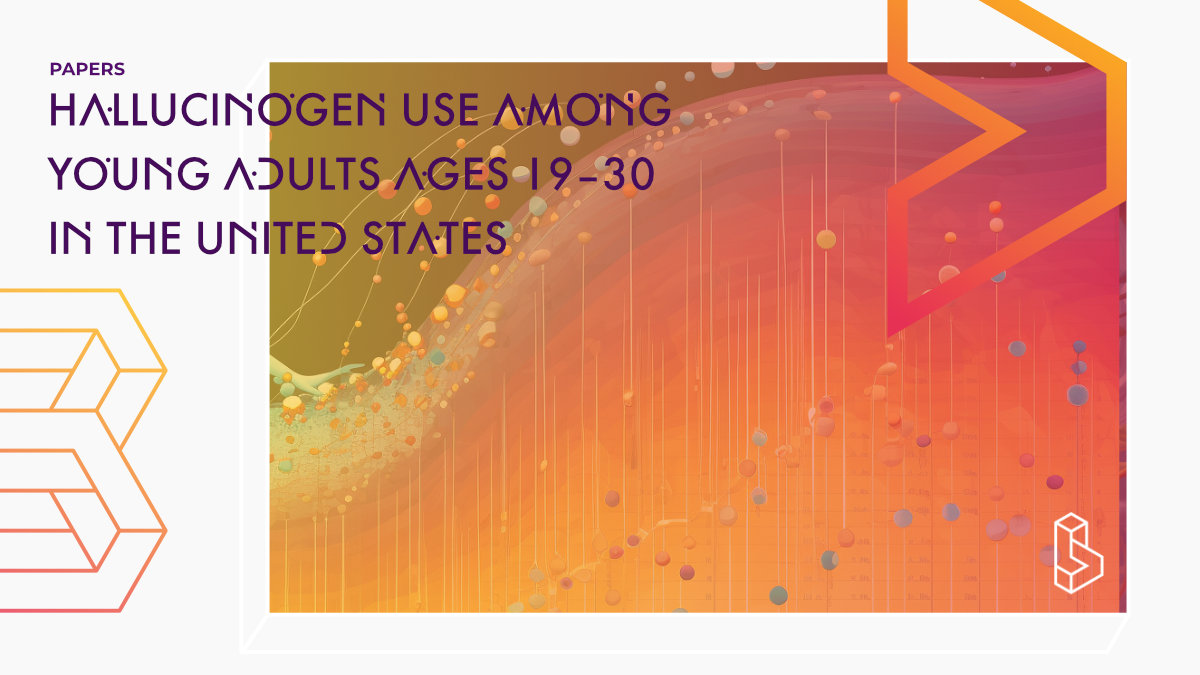This longitudinal cohort study (n=11,304) analysed hallucinogen use among young adults aged 19-30 in the US from 2018 to 2021. The study found that LSD use remained relatively stable, but the use of non-LSD hallucinogens (e.g., psilocybin) increased from 3.4% in 2018 to 6.6% in 2021. Males were more likely to use non-LSD hallucinogens, as were individuals who were white or from higher socioeconomic backgrounds. The study suggests that the prevalence of past-year non-LSD hallucinogen use doubled among young adults in the US during the studied period.
Abstract of Hallucinogen use among young adults ages 19–30 in the United States
“Background and aims Given the shifting landscape of hallucinogen use, particularly with increased therapeutic use, understanding current changes in use is a necessary part of examining the potential risk hallucinogens pose to vulnerable populations, such as young adults. This study aimed to measure hallucinogen use among young adults aged 19–30 years from 2018 to 2021.
Design, setting and participants This was a longitudinal cohort study among young adults aged 19–30 years from the US general population, interviewed between 2018 and 2021. Participants comprised 11 304 unique respondents, with an average number of follow-ups of 1.46 (standard deviation = 0.50). Of the observed data points, 51.9% were among females.
Measurements We examined past 12-month self-reported use of lysergic acid diethylamide (LSD), as well as hallucinogens besides LSD (e.g. psilocybin), monitoring any use as well as frequency, overall and by sex.
Findings From 2018 to 2021, past 12-month use of LSD among young adults in the US remained relatively unchanged, from 3.7% [95% confidence interval (CI) = 3.1–4.3] in 2018 to 4.2% in 2021 (95% CI = 3.4–5.0). Non-LSD hallucinogen [e.g. ‘shrooms’, psilocybin or PCP (phenylcyclohexyl piperidine)] use, however, increased in prevalence from 3.4% (95% CI = 2.8–4.1) to 6.6% from 2018 to 2021 (95% CI = 5.5–7.6). Across years, the odds of non-LSD use were higher for males [odds ratio (OR) = 1.86, 95% CI = 1.52–2.26] and lower for black than white participants (OR = 0.29, 95% CI = 0.19–0.47) and those without a college-educated parent (OR = 0.80, 95% CI = 0.64–0.99). Demographic disparities were similar for LSD use.
Conclusion Prevalence of past-year use non-lysergic acid diethylamide (LSD) hallucinogen was twice as high in 2021 as in 2018 among US young adults. Correlates of non-LSD hallucinogen use included being male, white and from higher socio-economic status backgrounds.”
Authors: Katherine M. Keyes & Megan E. Patrick
Summary of Hallucinogen use among young adults ages 19–30 in the United States
Non-medical hallucinogen use is associated with an increased risk of substance use disorders, injury, self-harm, and anxiety. Trends in use, particularly among young adults, may signal forthcoming public health intervention needs.
Psychedelic and hallucinogenic drugs are increasingly being used for medical and therapeutic purposes. Still, their non-medical use is associated with negative outcomes, including increased risks of substance use disorders, injury, self-harm, and anxiety.
Find this paper
Hallucinogen use among young adults ages 19–30 in the United States: Changes from 2018 to 2021
https://doi.org/10.1111/add.16259
Open Access | Google Scholar | Backup | 🕊
Cite this paper (APA)
Keyes, K. M., & Patrick, M. E. (2023). Hallucinogen use among young adults ages 19–30 in the United States: Changes from 2018 to 2021. Addiction.
Study details
Topics studied
Population Surveys
Study characteristics
Survey
Participants
11304
Humans

